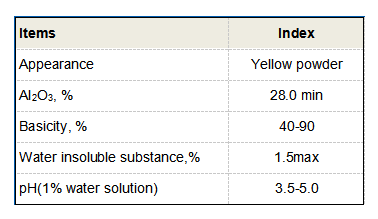Amino Tris Methylene Phosphonic Acid - Structure, Applications, and Benefits
Amino tris(methylene phosphonic acid), commonly referred to as ATMP, is a versatile chelating agent and a highly effective scale inhibitor. Its unique chemical structure, characterized by the presence of multiple phosphonic acid groups, allows it to interact favorably with various metal ions, making it invaluable in a range of industrial applications.
One of the primary uses of ATMP is in water treatment processes. Hard water, which contains high concentrations of calcium and magnesium ions, can lead to the formation of scale in pipelines and industrial equipment. This scale buildup not only reduces the efficiency of heat exchangers but also increases energy consumption and maintenance costs. By employing ATMP as a scale inhibitor, industries can effectively control and prevent the deposition of these unwanted minerals. The phosphonic acid groups in ATMP bind to calcium and magnesium ions, preventing them from crystallizing and forming scale.
Amino tris(methylene phosphonic acid), commonly referred to as ATMP, is a versatile chelating agent and a highly effective scale inhibitor
. Its unique chemical structure, characterized by the presence of multiple phosphonic acid groups, allows it to interact favorably with various metal ions, making it invaluable in a range of industrial applications.In addition to its roles in scale inhibition and dispersion, ATMP is also significant in the realm of agriculture. It is used as a chelating agent for micronutrients in fertilizers, ensuring that essential elements like iron, manganese, and zinc remain soluble and bioavailable to plants. This attribute enhances the effectiveness of fertilizers, leading to improved crop yields and better plant health. Farmers benefit from using ATMP-treated fertilizers, as it maximizes nutrient absorption while minimizing the loss of micronutrients due to soil fixation.
amino tris methylene phosphonic acid

The versatility of ATMP extends to the oil and gas industry as well. It is employed as a corrosion inhibitor and scale control agent in aqueous systems used during the extraction of oil and gas. By preventing scale formation and mitigating corrosion, ATMP helps ensure the longevity and efficiency of extraction equipment, thus supporting sustainable practices in the energy sector.
Furthermore, ATMP’s applications are not limited to industrial use; it can extend to municipal systems, including the treatment of drinking water. Its ability to stabilize metal ions reduces the risk of harmful metal leaching, contributing to better water quality for public consumption. As regulations regarding water quality become increasingly stringent, the role of compounds like ATMP continues to grow in importance.
While the environmental impact of chemical agents is an essential consideration, ATMP is generally regarded as having a lower ecological footprint compared to other phosphonates. However, like all chemicals, it should be used responsibly and in accordance with regulatory guidelines to ensure minimal impact on ecosystems.
In conclusion, amino tris(methylene phosphonic acid) is a multifunctional chemical that plays a vital role in various industries, including water treatment, agriculture, and oil and gas. Its ability to inhibit scale formation, disperse particles, and chelate essential nutrients underscores its significance in improving operational efficiencies and promoting sustainable practices. As research continues to unveil new applications and enhance the understanding of its environmental impact, ATMP is likely to remain a key player in modern industrial chemistry.
-
Understanding Polycarboxylic Acids: Properties, Applications, and Future PotentialNewsJul.28,2025
-
Scale Inhibitor Explained: How to Protect Your System from Limescale and Hard Water DamageNewsJul.28,2025
-
Scale and Corrosion Inhibitors: Essential Chemicals for Industrial Water System ProtectionNewsJul.28,2025
-
Polyaspartic Acid: A Biodegradable Polymer for Sustainable ChemistryNewsJul.28,2025
-
Isothiazolinones: A Versatile Antimicrobial Class with Industrial Power and Regulatory ChallengesNewsJul.28,2025
-
A Deep Dive into 2-Phosphonobutane-1,2,4-Tricarboxylic Acid (PBTC)NewsJul.28,2025





